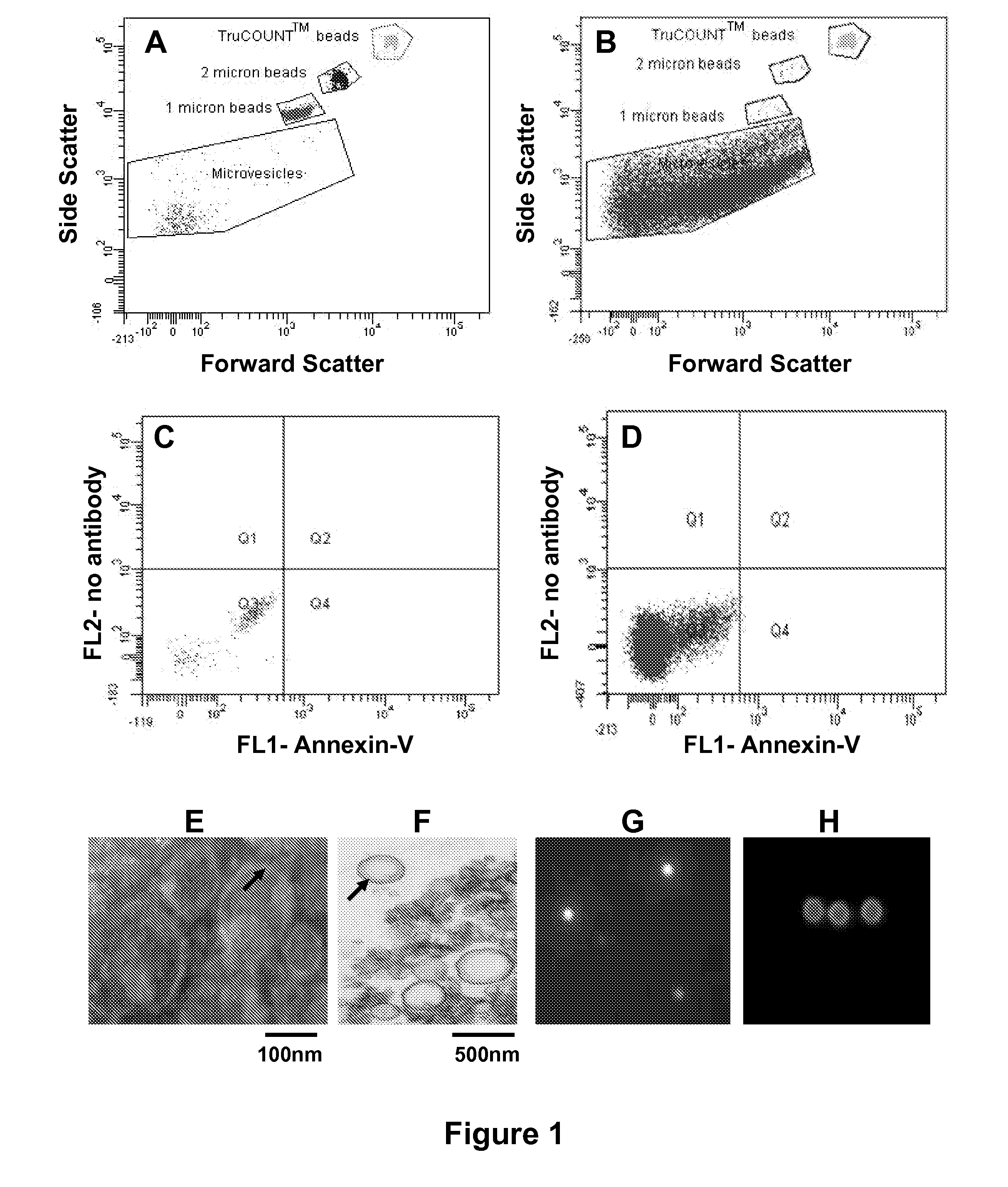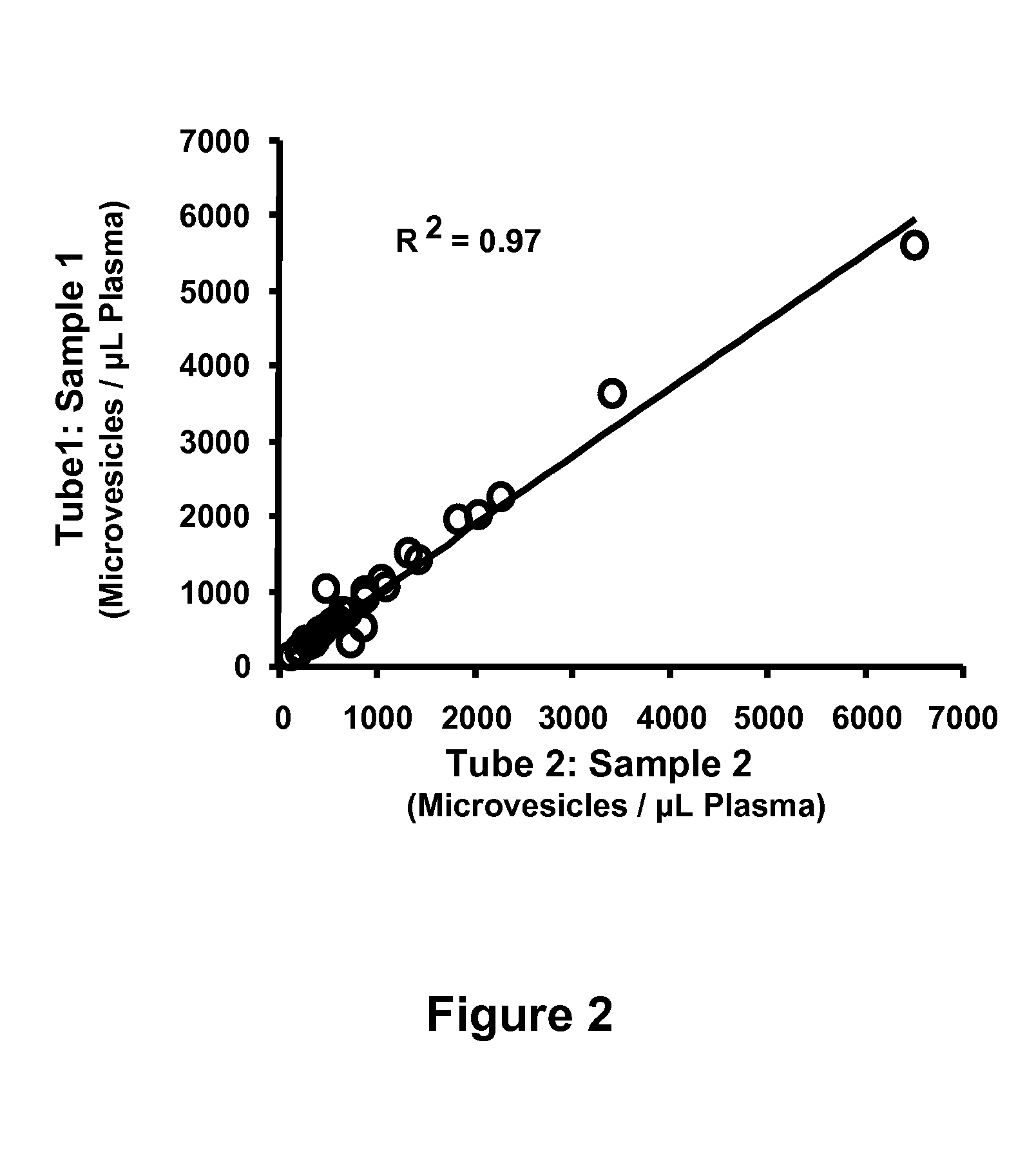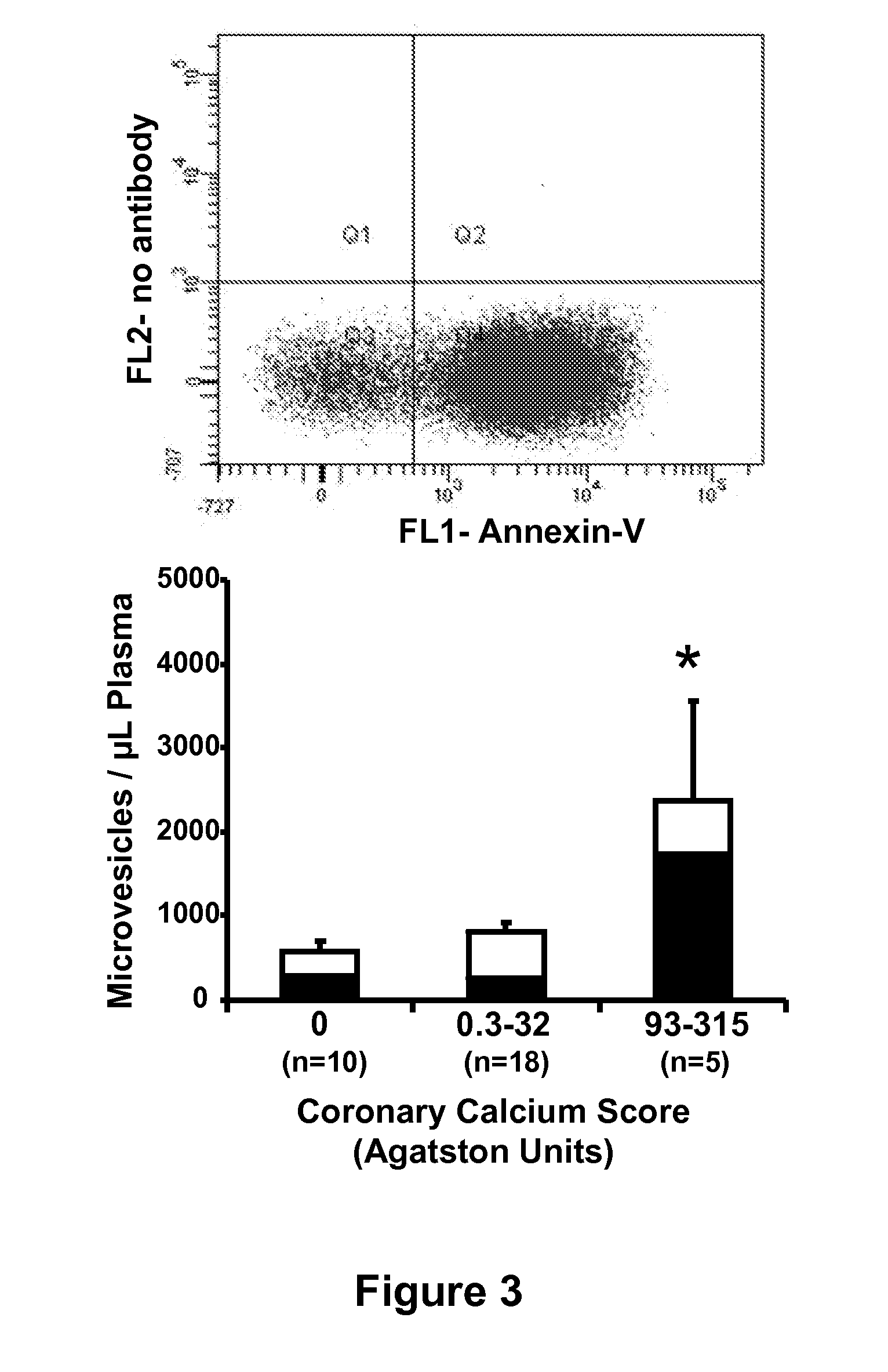Identifying coronary or soft tissue calcification
a soft tissue calcification and coronary artery technology, applied in the field of identifying coronary artery or soft tissue calcification, can solve the problem that the changes in circulating polypeptides are difficult to interpret as markers
- Summary
- Abstract
- Description
- Claims
- Application Information
AI Technical Summary
Benefits of technology
Problems solved by technology
Method used
Image
Examples
example 1
Association of Platelet and Endothelium-Derived Microvesicles with Coronary Artery Calcium
[0032]A cross-section study of a subset (n=33) of apparently healthy newly (between 6 mo and 3 years) menopausal women (n=146) screened to participate in a larger study was performed. The larger study was a randomized, placebo-controlled, double blinded, prospective multi-center trial evaluating women between the ages of 42-58 who are within three years of menopause to determine the effectiveness of oral and transdermal estrogen treatments to slow progression of carotid intimal thickness and coronary calcification. Because one exclusion criteria for the study was a coronary calcium score >50 Agatston units, all women undergo a coronary calcium scan at screening. Of the 146 women screened, five had an Agatston score >50 (range 93-315 Agatston units, eighteen had a coronary calcium scores >0 but 0 were included and ten women randomly selected from the 123 with a CAC score=0 were also included. Am...
PUM
| Property | Measurement | Unit |
|---|---|---|
| diameter | aaaaa | aaaaa |
| diameter | aaaaa | aaaaa |
| size | aaaaa | aaaaa |
Abstract
Description
Claims
Application Information
 Login to View More
Login to View More - R&D
- Intellectual Property
- Life Sciences
- Materials
- Tech Scout
- Unparalleled Data Quality
- Higher Quality Content
- 60% Fewer Hallucinations
Browse by: Latest US Patents, China's latest patents, Technical Efficacy Thesaurus, Application Domain, Technology Topic, Popular Technical Reports.
© 2025 PatSnap. All rights reserved.Legal|Privacy policy|Modern Slavery Act Transparency Statement|Sitemap|About US| Contact US: help@patsnap.com



